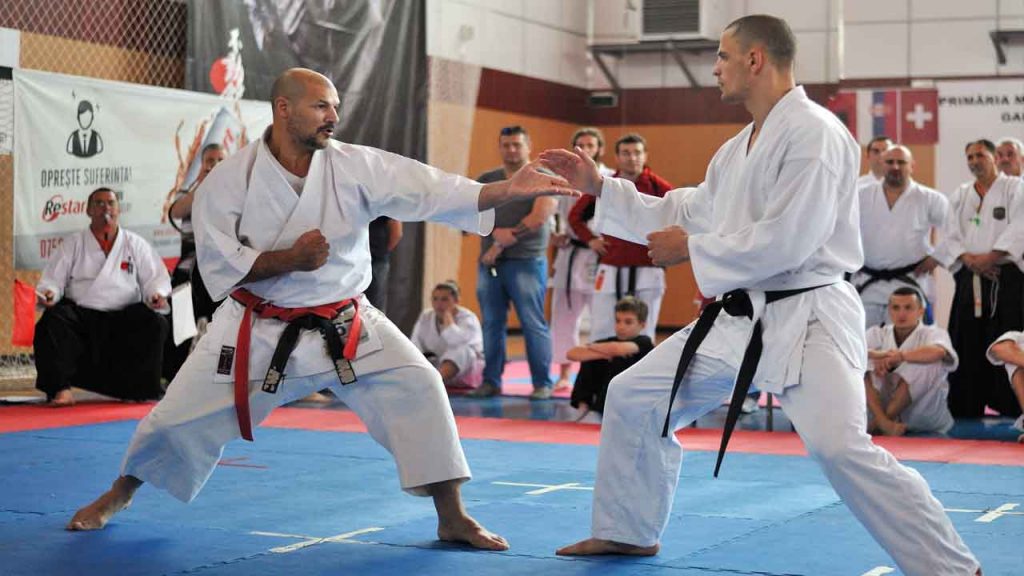Describe Karate. Where did karate first originate? Karate’s history is really fascinating. It demonstrates to us that even those who are subjected to injustice can have a long-lasting effect on the rest of the world.
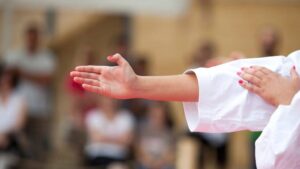
Describe Karate
A challenging kind of Japanese martial arts is karate. In contrast to the round, “soft” movements of martial arts like Kung Fu, these movements are precise and clean. (However, receiving a blow from a Kung Fu martial artist is hardly a soft landing.)
Bodily, Mental, and Spiritual
Practitioners pick up powerful physical self-defense skills. They spend hours performing drills, working on their balance and coordination, as well as hitting padded surfaces and eventually wood to toughen the striking surfaces of their bodies.
However, Karate is much more than just a martial art. It is also a style of thinking and living. Physical prowess is only one factor; spirit, tactics, and timing are all as significant. You’ll see focused expressions and determined looks if you’ve ever observed a Karate competition or lesson. Additionally, when they strike, you will hear them cry loudly as they unleash their inner power onto the target.
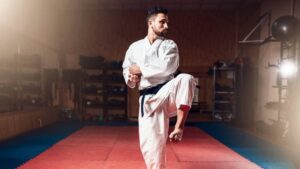
A Non-Weapons Art
Karate is a Japanese martial art that means “empty hand” and is primarily performed without the use of weapons. As we’ll see in a moment, the style was likely created by underprivileged peasants looking for a means of self-defense. Even though the use of some firearms has gradually crept in over the years, their Samurai overlords would most definitely not permit them to carry weapons.
Competition
Modern Karate, which has origins in East Asia and Japan, is currently practised all over the world. Kata and Kumite are two different competition formats that are used in karate tournaments.
Before there were video cameras, katas were primarily employed as a means of transmitting knowledge through a predetermined sequence of actions. Katas can be compared to a living technique library.
They are much more than just an archive, though. Katas are executed in competition with an intensity unmatched by any other sport. Both having perfect
Combat skills can be developed through kumite, often known as sparring. However, Kumite is a little more civilised than MMA, where fights can occasionally become nasty. Matches are assessed on skill and technique, and competitors are urged to “pull” their punches.
Contestants are penalised if they unintentionally use a dangerous move since it is forbidden.
This stance is occasionally criticised in traditional Karate. The claim is that competitors are rehearsing failure on the streets. Karate full contact styles have been created as a response to this. Kyokushin, commonly referred to as knockdown Karate or Japanese full contact Karate, is the most popular full contact style.
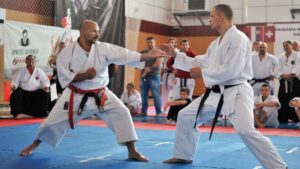
The History of Karate
So, from where did karate come?
Karate has a fascinating past. It didn’t start in one area or at one particular moment. There isn’t one person you can name and claim “they invented Karate.”
Instead, over the course of several centuries, Karate was gradually evolved, and its practitioners were influenced by a wide range of sources. They eventually developed the martial technique that is practised today.
The majority of this construction took place on the island of Okinawa. Here is a little
The Origin of Okinawan Karate
The Ryukyu Kingdom, which includes the modern-day island of Okinawa, is where the origins of Karate may be found. China’s Ming Dynasty began conducting business with the Ryukyu Kingdom around 1372.
The Chinese brought their own fighting method, Kung Fu, which was created in the Shaolin Temple and is partly based on a fighting system that originated in Ancient India.
There was little standardisation and the two styles were combined. Instead, it was a group of people who were all evolving their own fighting techniques. King Sh Shin forbade the usage of guns in Okinawa in 1477.
According to the legend, this stimulated interest in martial arts since people were looking for a non-weaponized means of self-defense.
After a few hundred years, in the late 1700s and early 1800s, Okinawan martial arts finally underwent further formalisation. Tudi, or Okinawan martial arts, became popular.
In Okinawa, various styles of tang hand developed. Later, the head of one of these styles, Gichin Funakoshi, was invited to the Japanese Ministry of Education to perform demonstrations. Gichin’s style experienced a rise in popularity as a result, and Shotokan Karate started to be known as such. Subsequently, other forms spread to mainland Japan.
The term “tang hand” was dropped (because of its links with China) and replaced with the name “karate,” which is a Japanese word that means “empty hand” in the run-up to the second world war.
The martial art we know today, karate, continued to grow as it gained popularity in the west in the late 1960s and early 1970s as Japanese instructors relocated abroad.
You might know the following for an overview of sport karate:
WHO DID OKINAWAN KARATE PRACTISE?
Okinawan karate’s actual history has been lost to time. As we’ve seen, there is a fundamental structure and timeframe, although it’s unclear exactly who practised Karate and kept it alive.
For instance, according to some sources, when they were not allowed to carry weapons, peasants and farmers practised martial arts to defend themselves. The tradition continues by saying that because they had no other options, many of the contemporary Okinawan weapons (some of which are utilised in karate) were modelled on farm equipment.
Others assert that farmers and peasants would not have had the time or energy to engage in martial arts training. They were much more concerned with the day-to-day struggles for survival.
Another intriguing fact is that the Japanese samurai Satsuma clan invaded in 1609 and ruled the region for 270 years. For easier population control, they forbade the Okinawans from engaging in martial arts during this time.
Stories of people practising at night when it was less probable that anyone would see them start to surface at this point. However, how many farmers and peasants would have had the stamina to achieve this?
Whatever the case, someone managed to preserve the traditions, and the martial art eventually made it to the late 1700s before becoming formalised.
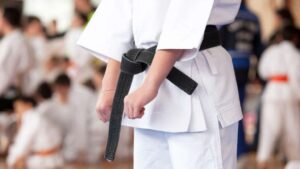
FAQs Regarding Karate
To put it mildly, there is much mystery surrounding the origins of karate. How the paintings survived is still a subject of much debate. Some people may even wonder how contemporary Karate compares to the traditional Okinawan fighting styles used throughout the Ryukyu Kingdom.
We can respond to a number of the inquiries about Karate’s beginnings, though not all of them. Here are some responses to some of the most popular queries.
Where Did Karate First Appear?
Karate was primarily created on the island of Okinawa, although having roots in Ancient China and even Ancient India. Early in the 20th century, it was introduced to Japan where it underwent refinement to become the contemporary Karate we know today.
Is karate a Japanese or Chinese art?
Japan is the primary origin of modern karate. The Okinawan martial arts technique was taken to Japan where it was developed further. Japanese culture is now deeply engrained in the karate pupils’ concept and way of thinking.
You might be excused for wondering if Karate is Chinese, though. Chinese martial skills, or Kung Fu, were substantially incorporated into the Okinawan art that gave rise to Karate. It is noteworthy to observe that one had such an impact on the other, even though Kung Fu and Karate today seem very different from one another.
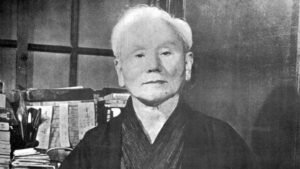
Zaw Trading-Gichin-Funakoshi
Who Invented Karate?
The invention of Karate cannot be attributed to a single person. Gichin Funakoshi is recognised as the originator of modern karate, though. He established Shotokan Karate, one of the most well-known forms of karate, and is credited with introducing karate to Japan.
When Did Karate Start?
Karate has only been around for a little under 100 years. When Gichin Funakoshi introduced the martial art to Japan in 1936, the term “Karate” was adopted to describe it. Even though Karate is a relatively new moniker, its roots go back hundreds of years, as we’ve already described here.
When you put on your Karate gi and tighten your belt, you may rest confident that you are becoming a part of a rich tradition in martial arts.
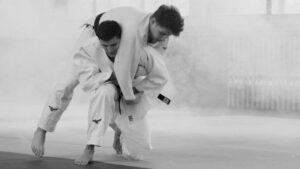
When Was Karate Invented?
It’s challenging to pinpoint the exact year that Karate was created. Karate evolved over many centuries, as we’ve already covered in this article. If you must date it, Karate’s present moniker came into being around 1936. Then, in 1939, Shoto-Kan, Japan’s first authorised Karate training facility, opened its doors.
Is Kung Fu Related to Karate?
Sort of. Okinawan martial arts, which were greatly influenced by Chinese Kung Fu, were the basis for the development of karate. Due to the extensive trade connections, many Chinese families relocated to Okinawa and brought Kung Fu with them.
If you want to put it simply, you could say that Karate is a combination of Kung Fu, Okinawan martial arts, and Japanese style.
Final Thoughts on the History of Karate
We sincerely hope that you have enjoyed learning about the history of karate. As you can see, the history of the art is rich and lengthy. Even though all the specifics are unknown, you may still be proud of the artistic tradition.
Before you, several Karate practitioners and instructors proudly wore their belts, joining a long line of honourable individuals throughout history.
Are you prepared to learn more about karate? Check out these fundamental Karate stances to effectively take down opponents!

